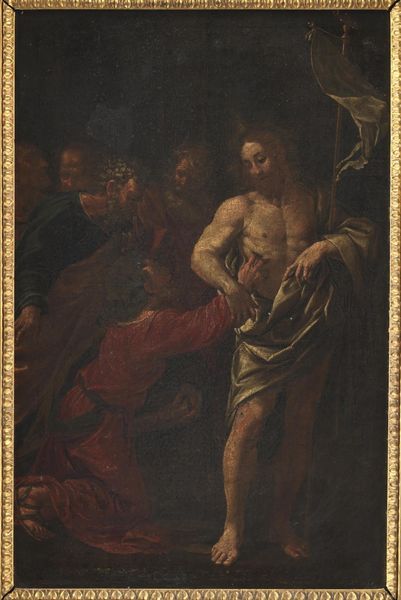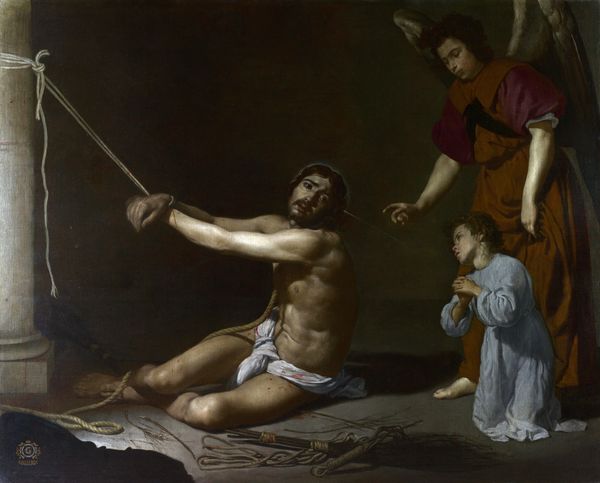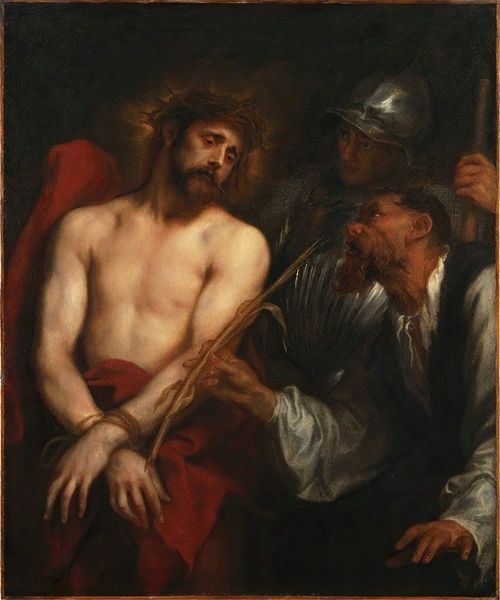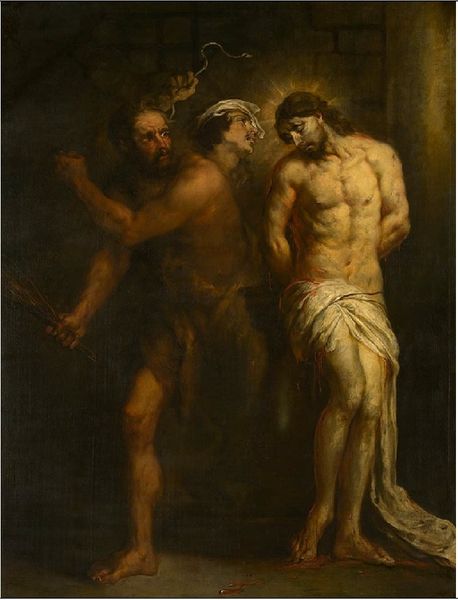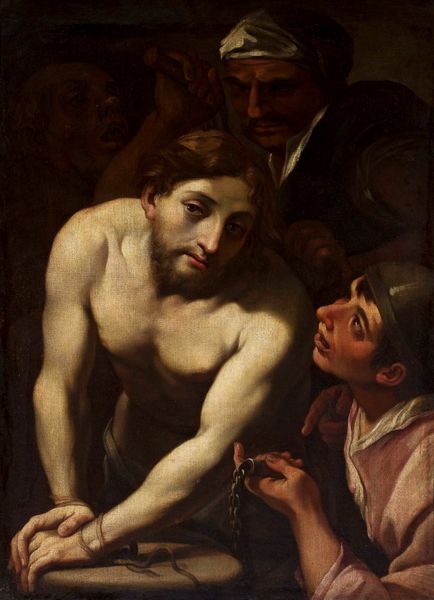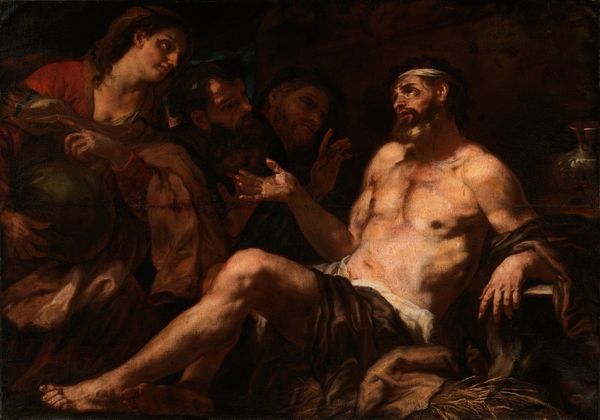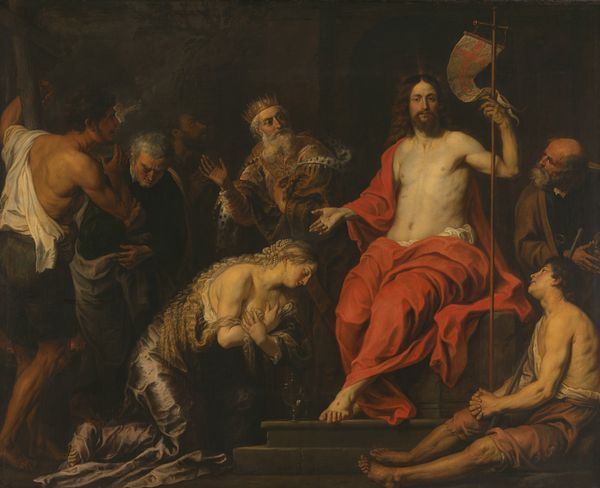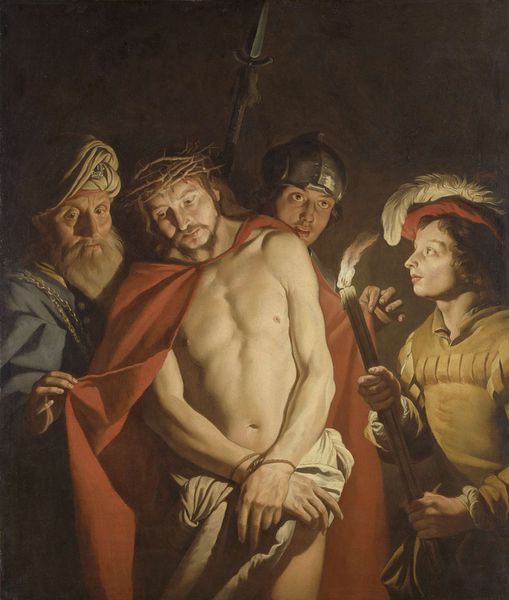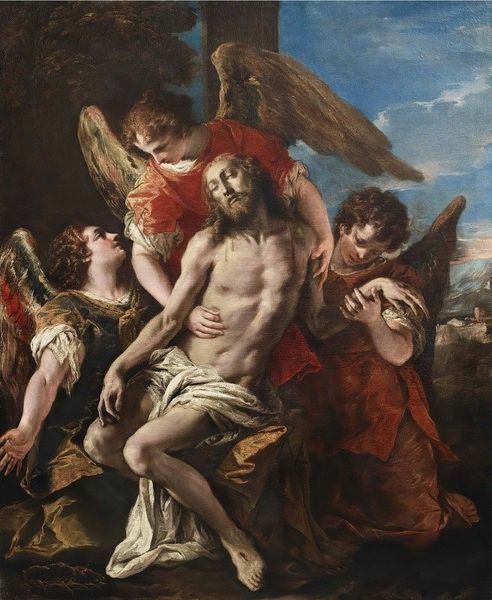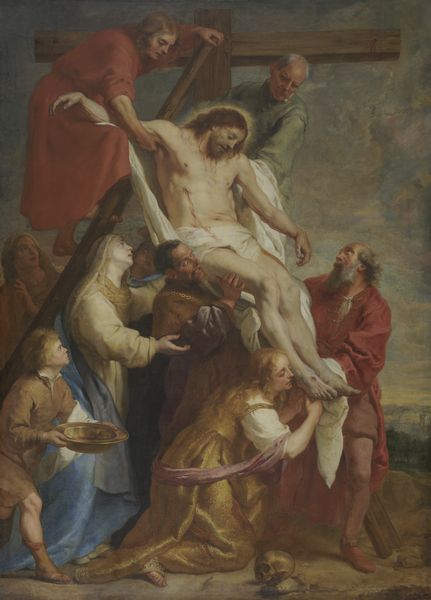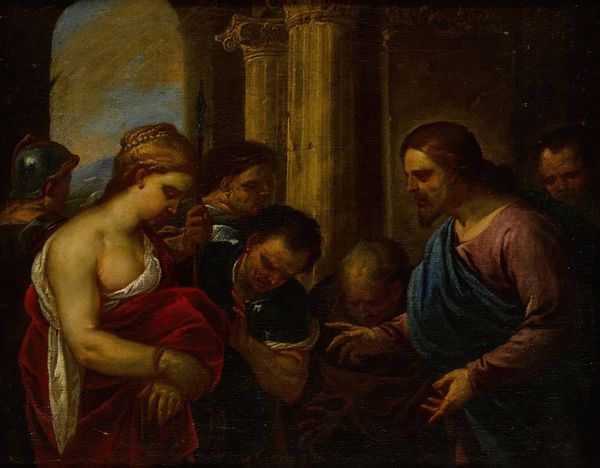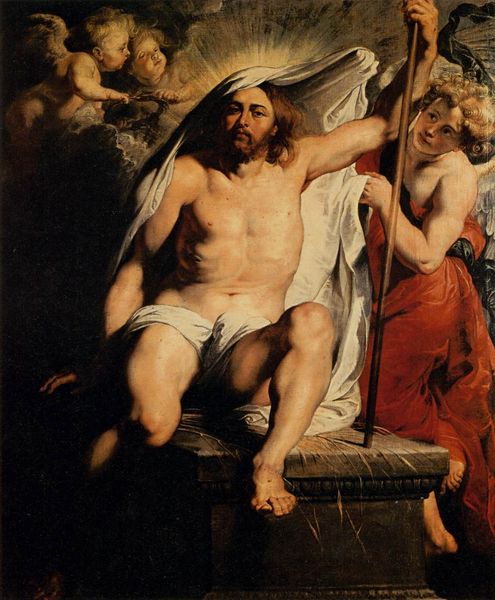
painting, oil-paint
#
portrait
#
baroque
#
painting
#
oil-paint
#
painted
#
figuration
#
oil painting
#
neo expressionist
#
chiaroscuro
#
history-painting
Copyright: Public Domain: Artvee
Curator: Here we have "Ecce Homo," a work attributed to Eugène Delacroix. I'm immediately struck by the theatrical lighting; the artist's skillful use of chiaroscuro to heighten the drama. Editor: Yes, the strong contrast of light and dark areas creates an incredibly somber and contemplative mood. The central figure seems vulnerable and exposed, a common depiction in paintings centered on this specific theme. Curator: Examining the brushwork closely, you can appreciate the application of oil paint—layers upon layers, building up both form and emotional weight. The crown of thorns looks rather painfully crafted, a sort of cruel ornament. What’s your reading of the symbols and their effect in relation to the production, and perhaps the commerce, of these images in Delacroix's time? Editor: Well, that's it! The crown, of course, refers to Christ's Passion, linking him to centuries of depictions and suffering. But that soldier pointing at him – look at the almost smug confidence in that gesture. That action reverberates through history; it is like every act of accusation throughout the ages being channeled through this soldier in this image. It shows continuity in culture. Curator: You’ve mentioned accusation. I find interesting the social function fulfilled by paintings like this one. We need to consider who produced, sold, and acquired them, since devotional images could have also served as indicators of certain social strata or status. In this work there is a certain focus on what the body of Christ means, since that depiction has political meanings. Editor: Precisely. It reinforces dominant power structures, in part as a mechanism for social regulation; though conversely, it also gives power to the marginalized and oppressed in connecting themselves with such figure. So, both. Now, tell me something about the canvas preparation. Is there any evidence of commercial preparation, or does the ground appear to have been made in-house at the atelier? Curator: While a full materials analysis hasn’t been carried out, I'd be surprised if it wasn't commercially prepared. The scale of Delacroix's workshop almost required it for economic purposes. I’m going to also risk mentioning that his handling of paint and textures looks like it had something to do with English pictorial traditions and I would really be interested in finding a way to scientifically examine how different handling approaches have generated the varying levels of public emotion across European history. Editor: This image is indeed layered—historically, psychologically, and materially. Food for thought, isn’t it? Curator: Indeed. Art always invites a deep consideration of the world around us.
Comments
No comments
Be the first to comment and join the conversation on the ultimate creative platform.
